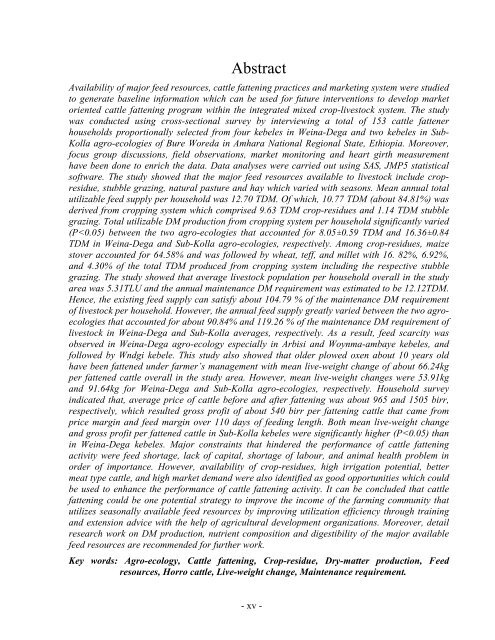Mekelle University The School of Graduate Studies Faculty of Dry ...
Mekelle University The School of Graduate Studies Faculty of Dry ...
Mekelle University The School of Graduate Studies Faculty of Dry ...
- No tags were found...
Create successful ePaper yourself
Turn your PDF publications into a flip-book with our unique Google optimized e-Paper software.
AbstractAvailability <strong>of</strong> major feed resources, cattle fattening practices and marketing system were studiedto generate baseline information which can be used for future interventions to develop marketoriented cattle fattening program within the integrated mixed crop-livestock system. <strong>The</strong> studywas conducted using cross-sectional survey by interviewing a total <strong>of</strong> 153 cattle fattenerhouseholds proportionally selected from four kebeles in Weina-Dega and two kebeles in Sub-Kolla agro-ecologies <strong>of</strong> Bure Woreda in Amhara National Regional State, Ethiopia. Moreover,focus group discussions, field observations, market monitoring and heart girth measurementhave been done to enrich the data. Data analyses were carried out using SAS, JMP5 statisticals<strong>of</strong>tware. <strong>The</strong> study showed that the major feed resources available to livestock include cropresidue,stubble grazing, natural pasture and hay which varied with seasons. Mean annual totalutilizable feed supply per household was 12.70 TDM. Of which, 10.77 TDM (about 84.81%) wasderived from cropping system which comprised 9.63 TDM crop-residues and 1.14 TDM stubblegrazing. Total utilizable DM production from cropping system per household significantly varied(P

















